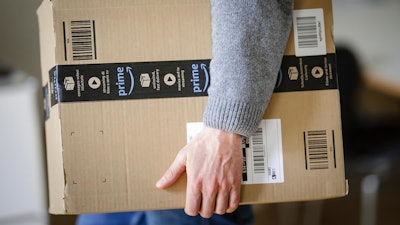
It’s safe to say that the Coronavirus disease (COVID-19) outbreak has changed the world of shipping. The changes and updates have come at such a rapid pace that it’s hard to know where to look next — much less figure out how to tackle it.
There is no historical precedent for today’s environment. But, with regards to long-term recovery plans—they don’t include panic. Fear now will only force rash decisions that could affect your business permanently. Instead, devise a plan in stages that allows you to adjust as the shipping environment continues to evolve.
To do now
Identify your carrier rep, if you don’t already have a relationship, and contact them immediately. Ask about locking in your company’s earned discount tier to the target set during your most recent carrier contract negotiations. Depending on your business, your shipping volume could be plummeting, and you don’t want to risk seeing discounts disappear.
Perhaps volume is rapidly increasing in today’s environment. You should also take a minute to speak to your carrier. Make sure they are prepared to handle your additional volume, and if an increase can move you to a better discount tier.
When it comes to customers, communicate early and often. Before they even order, tell them shipping will be delayed and set expectations along the way. With both UPS and FedEx dropping their guarantees, you don’t want to make promises you can’t keep.
To do in 30 days
Look back at the last 30 days and look for patterns and trends in your supply chain and orders. Forget about last year’s numbers — they’re irrelevant. This is a “New Normal,” so recent data is the best for forecasting.
Do you see any new trends in your product mix and customers’ shipping choices? As your business and customers have adjusted, have these trends changed? While just a few weeks ago, we all still expected to receive orders in two days, consumers are rapidly adjusting to the new state of affairs. Could other shipment options become more acceptable — or even desirable —for customers now? Consider new standards as you look through the data. Have you considered in-store fulfillment, shipping to one of your stores or shipping to a partner location or locker?
To do in 60-90 days
This is the time to reimagine. What are the new dynamics of your business and industry? What do you want your customer experience to be? What are your customers considering essential, and what can they do without?
According to some experts, just-in-time could be a thing of the past. Use this global “pause” to build and execute an operational wish list that will help cushion your business from future disasters and ease the path back to a healthy business.
Specifically, look at opportunities within your distribution centers to:
● Optimize product placement across your distribution network.
● Redesign your conveyor system.
● Study and optimize your packaging.
● Implement dimensional scales at shipping stations so you can use dimensional weight when appropriate.
To do in 180 days
Though it’s impossible to predict, six months from now could be when things start to go back to “normal” in business and life. Review year-over-year trends. Where was your business last year at this time, and where is it today? Have the changes you’ve been making during this crisis set you up to fare better if a similar situation occurs in the future?
Examine your current carrier agreement. Customary service guarantees may never return, so find new ways to mitigate issues. Now that you’ve seen the impact of a global crisis, what do you need to change related to risk management? Have new surcharges arisen that you need to add to cost analysis?
Your supply chain and distribution centers should be closely examined as well. Are your distribution centers ideally situated? How do they affect your shipping times? Looking at your shipping data and considering new distribution center locations could help shave off delivery time, mitigating changes to carrier service guarantees. Your customer experience must always remain paramount, and new business plans should center on the best possible customer outcomes.
Plan, don’t panic
When faced with an unprecedented situation like COVID-19, some of us tend to panic. That’s normal, but as a business owner, you have employees, suppliers and customers depending on you. So instead, plan carefully. Continue to collect data across all the resources to analyze and anticipate where things are headed tomorrow. Be patient, be tolerant, and above all, be calm.




















